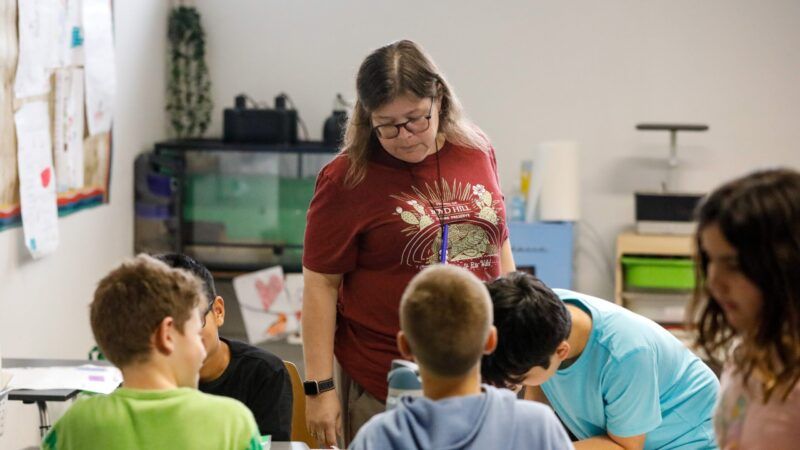The Microschool Revolution Is Just Getting Started
Microschools are giving educators the freedom to innovate. Regulators need to get out of the way.

Forget apples—this Teacher Appreciation Week, how about giving educators something they can actually use: freedom. Florida did this with a 2024 law that opened the door for educational innovation by easing zoning and land-use restrictions on microschools, making it easier for alternative learning models to flourish outside the traditional system.
Following the passage of House Bill 1285, veteran educator Alison Rini repurposed a vacant day care center in the middle of a government housing project in Sarasota, Florida, and opened a microschool. A microschool generally refers to elementary, middle, or high school programs that are tiny by design, averaging just 16 students each.
Parents at Rini's school previously sent their children on a seven-mile bus ride to the nearest public school. But now they can enroll their kindergartners in a neighborhood program just steps from home. Rini is still a teacher, but she is also her own boss.
And she is not alone. Rini's enterprise, Star Lab, is part of a national movement that took off during the COVID-19 pandemic. Some parents, frustrated by the quality of online instruction, formed informal homeschool co-ops and learning pods as alternatives. These groups rotate teaching duties among themselves or pool their resources and hire professional educators.
Parents usually take the lead, but teachers are also getting involved. Many educators have left the public school system and launched microschools in homes, churches, libraries, strip malls, converted office spaces, and even wilderness retreats.
Former public school teacher April Jackson opened PASS Pod, a microschool in Atlanta, to help children from her predominantly black community learn to read at grade level. Former public school teacher Shiren Rattigan founded Colossal Academy, a microschool in Fort Lauderdale, Florida, with classes three days a week on a farm.
States should embrace this can-do attitude that gives parents, students, and teachers more choices. But across most of the nation, policymakers and teachers unions see microschools as a threat. Education industry insiders have an $857 billion monopoly, and they do not want money leaking out—even through microcracks.
The most common regulatory weapon is to define microschools as private schools. This triggers a host of one-size-fits-all regulations designed for much larger campuses—the kinds with ball fields, gymnasiums, cafeterias, hallways, nursing offices, and multiple classrooms.
Instead of focusing on instruction, teachers who strike out on their own must navigate bureaucratic red tape, pass on-site inspections, and respond to demands for unnecessary building and fire safety upgrades. At some point, the regulatory burdens become unbearable, and teachers can find themselves trapped in the same system they previously escaped.
These code compliance rules kick in as soon as any K-12 enterprise grows beyond a certain point. The threshold in Wisconsin is any "instructional program provided to more than one family unit." The threshold in North Carolina is more than two families. Imagine needing lockdown drills and $97,000 fire sprinklers for groups this small.
Our organization, the Institute for Justice, saw this abuse firsthand when a fire marshal in Cobb County, Georgia, tried to shut down St. John the Baptist Hybrid School—a microschool offering supplemental instruction for homeschoolers—overlooking a 2021 state law that protected microschools from over-the-top code enforcement.
Once our firm reminded the county of this reality, officials backed down.
Besides Florida and Georgia, Tennessee, Texas, Utah, and West Virginia have taken steps in the right direction. Based on the current regulatory climate, any move toward more robust school choice is welcome. The market is ready for an overhaul.
"A school no longer means 800 kids in 60 classrooms on two floors," says Rini, who was motivated to take action in Florida after seeing the postpandemic learning loss.
At its core, education simply requires students and teachers. Parents can fill the educator role, if they prefer, or hire someone else. The Supreme Court recognizes their right to direct the upbringing and education of their children.
Teachers like Rini stand ready to help.
